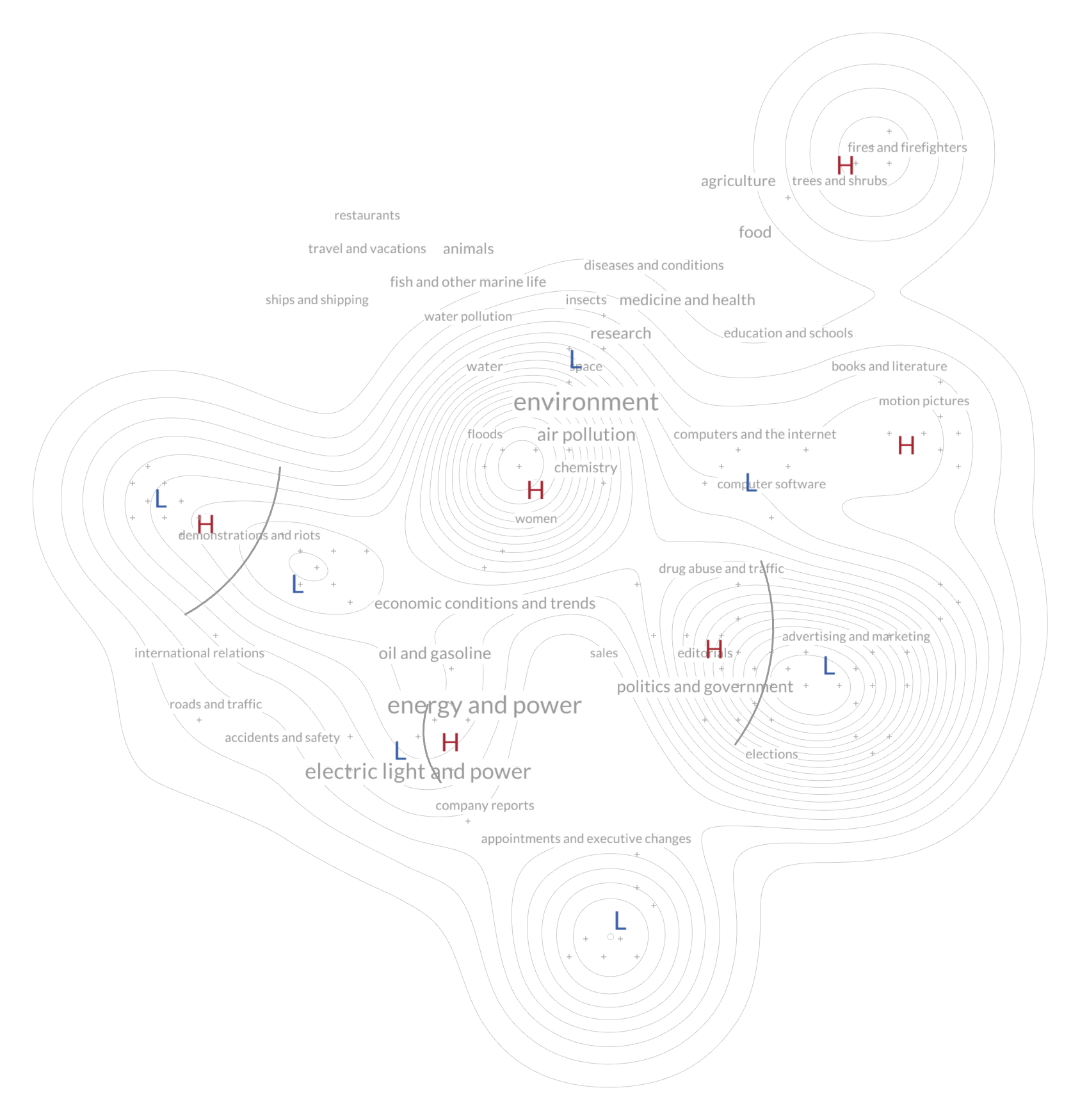Weather Map
The Weather Map is a diachronic visual model that innovatively maps controversies in media narratives, using advanced data analysis to visualize the evolution of public debates over the years.- Time
- –

The Weather Map is a project designed for visually analyzing public debates in the media. Using Media Cloud, the dynamic digital tool converts specific queries into advanced visualizations inspired by synoptic weather charts. This approach sheds light on media conflicts through atmospheric dynamics metaphors, offering a fresh perspective on the intricate nature of media controversies and their actors.
In the field of Science and Technology Studies, the Weather Map is a notable contribution to controversy mapping tools. Developed using Python and JavaScript, it embodies Bruno Latour’s pioneering efforts in controversy mapping as a pedagogic instrument. The tool pushes the boundaries of network visualization by seamlessly integrating advanced user experience, natural language processing, and graphic design.
The project’s significance is amplified by the synergy between the metaLAB and the Berkman Klein Center for Internet & Society at Harvard University. Originally incubated at Harvard and MIT, Media Cloud is an open-source platform now developed by the Media Ecosystems Analysis Group, the University of Massachusetts Amherst, and Northeastern University. It provides a vast newspaper information from the past, crucial for the Weather Map’s diachronic mapping.
The project is committed to open access and collaboration, with its codebase hosted on GitHub. This approach encourages broad participation and innovation, allowing the community to contribute and adapt the tool. The GitHub repository primarily uses Jupyter Notebook for data analysis and visualization, with some elements in JavaScript, showcasing the project’s focus on interactive and graphical data representation.
The concept of the Weather Map is elaborated in a comprehensive book chapter, which is part of “Zoomland,” a publication developed by the University of Luxembourg and the De Gruyter publisher. This chapter offers a detailed exploration of the project’s methodology, development, and application in the field of digital humanities and media analysis, delving into the significance of its contributions to understanding and visualizing complex media narratives.


